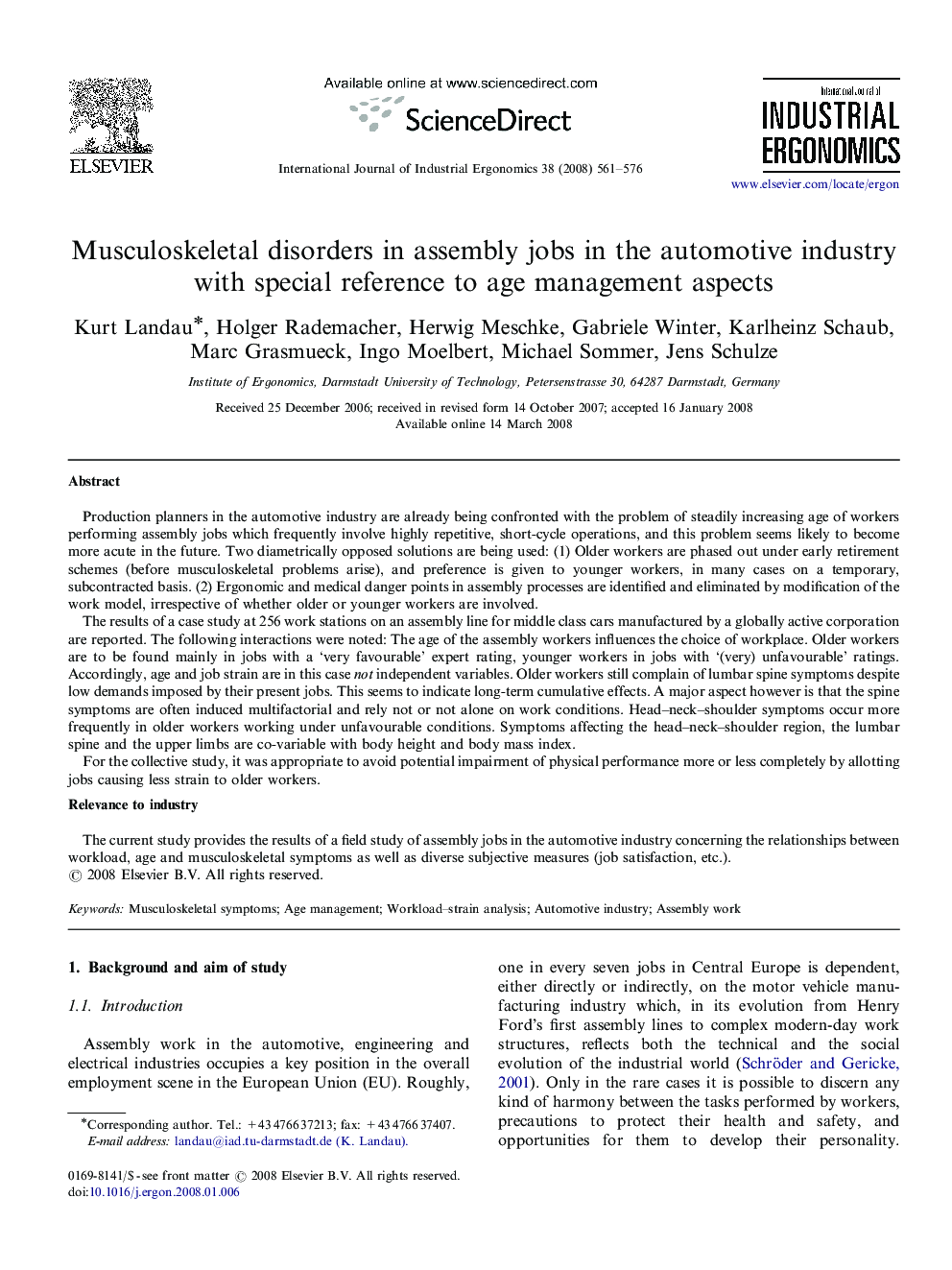| Article ID | Journal | Published Year | Pages | File Type |
|---|---|---|---|---|
| 1096686 | International Journal of Industrial Ergonomics | 2008 | 16 Pages |
Production planners in the automotive industry are already being confronted with the problem of steadily increasing age of workers performing assembly jobs which frequently involve highly repetitive, short-cycle operations, and this problem seems likely to become more acute in the future. Two diametrically opposed solutions are being used: (1) Older workers are phased out under early retirement schemes (before musculoskeletal problems arise), and preference is given to younger workers, in many cases on a temporary, subcontracted basis. (2) Ergonomic and medical danger points in assembly processes are identified and eliminated by modification of the work model, irrespective of whether older or younger workers are involved.The results of a case study at 256 work stations on an assembly line for middle class cars manufactured by a globally active corporation are reported. The following interactions were noted: The age of the assembly workers influences the choice of workplace. Older workers are to be found mainly in jobs with a ‘very favourable’ expert rating, younger workers in jobs with ‘(very) unfavourable’ ratings. Accordingly, age and job strain are in this case not independent variables. Older workers still complain of lumbar spine symptoms despite low demands imposed by their present jobs. This seems to indicate long-term cumulative effects. A major aspect however is that the spine symptoms are often induced multifactorial and rely not or not alone on work conditions. Head–neck–shoulder symptoms occur more frequently in older workers working under unfavourable conditions. Symptoms affecting the head–neck–shoulder region, the lumbar spine and the upper limbs are co-variable with body height and body mass index.For the collective study, it was appropriate to avoid potential impairment of physical performance more or less completely by allotting jobs causing less strain to older workers.Relevance to industryThe current study provides the results of a field study of assembly jobs in the automotive industry concerning the relationships between workload, age and musculoskeletal symptoms as well as diverse subjective measures (job satisfaction, etc.).
